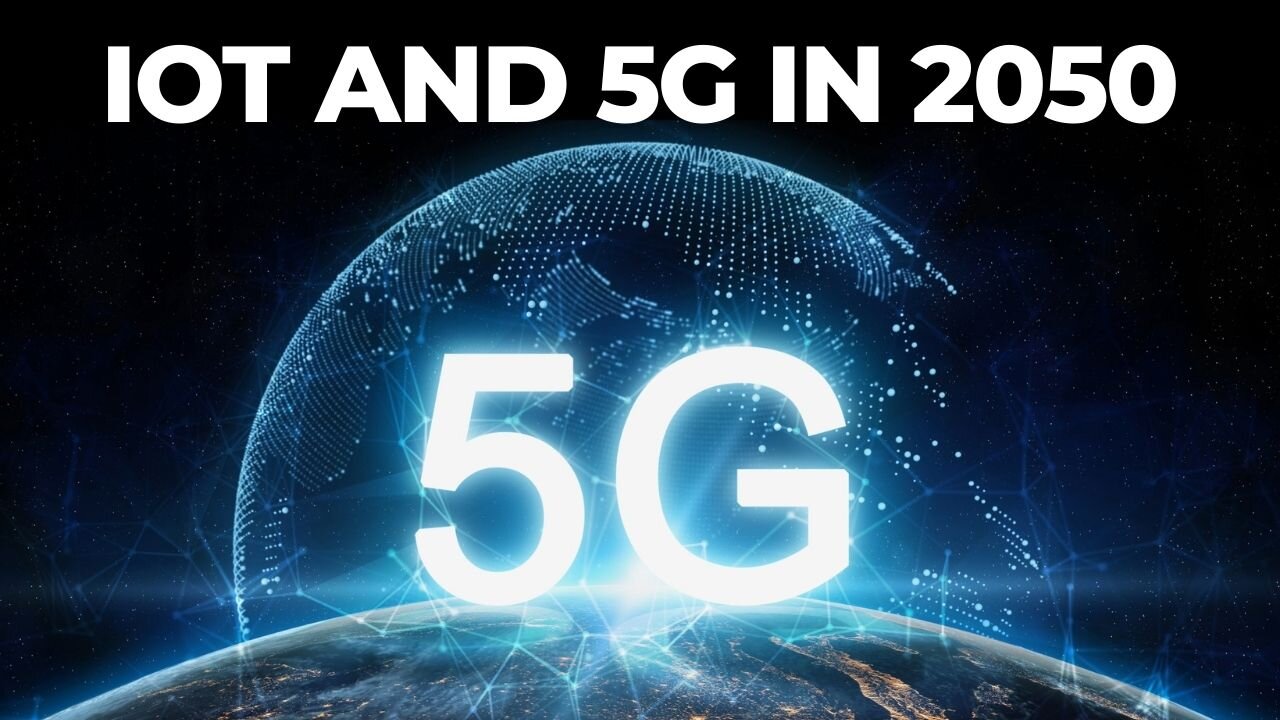Premium Only Content

IoT and 5G in 2050
In the not-too-distant future, the synergy between the Internet of Things (IoT) and 5G technology is set to redefine the way we live, work, and interact. Here, we explore the evolving landscape of IoT and 5G, envisioning their trajectory over the next 25 years.
1. The Current State of IoT:
1.1 Definition and Scope:
The Internet of Things refers to the network of interconnected devices embedded with sensors, software, and other technologies to exchange data with other devices and systems over the internet. Its current applications range from smart homes and cities to industrial IoT in manufacturing.
1.2 Connectivity Challenges:
While IoT has made significant strides, connectivity challenges persist. The limited bandwidth of existing networks hampers the real-time communication necessary for many IoT applications.
2. The Arrival of 5G:
2.1 Revolutionizing Connectivity:
The advent of 5G technology heralds a new era of connectivity characterized by ultra-fast speeds, low latency, and the ability to connect a massive number of devices simultaneously.
2.2 Key Features of 5G:
Increased Bandwidth: 5G offers significantly wider bandwidth, enabling faster data transfer.
Low Latency: With latency reduced to milliseconds, 5G ensures near-instantaneous communication.
Massive Device Connectivity: The network is designed to accommodate a vast number of connected devices per square kilometer.
3. The Convergence of IoT and 5G:
3.1 Unleashing IoT Potential:
The integration of 5G and IoT addresses many of the connectivity limitations of earlier networks, unlocking the full potential of IoT applications.
3.2 Enhanced Industrial IoT:
Industries will benefit from enhanced Industrial IoT (IIoT) applications, optimizing processes, predicting maintenance needs, and improving overall efficiency.
3.3 Smart Cities:
The combination of 5G and IoT will pave the way for smarter cities with connected infrastructure, improving public services, transportation, and sustainability.
4. IoT and 5G in the Next 25 Years:
4.1 Ubiquitous Connectivity:
By 2048, IoT devices will be omnipresent, woven seamlessly into the fabric of daily life. From smart clothing to connected appliances, nearly every aspect of our environment will be IoT-enabled.
4.2 Autonomous Systems:
Autonomous vehicles, powered by the low-latency capabilities of 5G, will become commonplace. These vehicles will communicate with each other and with smart city infrastructure, leading to safer and more efficient transportation systems.
4.3 Healthcare Revolution:
IoT, facilitated by 5G, will revolutionize healthcare. Remote patient monitoring, smart medical devices, and predictive analytics will become integral parts of healthcare delivery.
4.4 Edge Computing Integration:
Edge computing, leveraging the proximity of computing resources to the data source, will be seamlessly integrated with IoT devices. This will reduce latency and enhance real-time processing capabilities.
5. Challenges and Considerations:
5.1 Security Concerns:
As IoT devices proliferate, security will be a paramount concern. Ensuring robust cybersecurity measures will be crucial to protect sensitive data and prevent unauthorized access.
5.2 Privacy Implications:
The widespread adoption of IoT raises significant privacy considerations. Striking a balance between the benefits of data-driven insights and individual privacy will be an ongoing challenge.
#iot #internetofthings #5g #internet #conectivity #technology #communication #smartcities #autonomousdriving #autonomousmobilerobots
-
 LIVE
LIVE
Joker Effect
28 minutes agoYOU DON'T UNDERSTAND FREEDOM OF SPEECH IF THIS MAKES YOU MAD!
273 watching -
 LIVE
LIVE
SpartakusLIVE
3 hours agoFriday Night HYPE w/ #1 All-American Solo NUKE Hero
70 watching -
 1:45:26
1:45:26
vivafrei
7 hours agoSantos Sentenced to 87 MONTHS! Corrupt Judges ARRESTED! Some Canada Stuff & MORE!
108K73 -
 4:34:03
4:34:03
Nerdrotic
6 hours ago $17.38 earnedStar Wars GRAPED? Hollywood In Freefall, Silver Surfer is a MAN! | Friday Night Tights 351
68.6K18 -
 1:33:35
1:33:35
Keepslidin
2 hours ago $0.30 earned$5000 START | ROAD TO 100K | Mother.land
13.3K2 -
 1:27:54
1:27:54
2 MIKES LIVE
4 hours ago2 MIKES LIVE #210 Open Mike Friday!
11.8K -
 13:18
13:18
T-SPLY
10 hours agoFBI Arrest Democrat Judge For Protecting Illegal Immigrant!
44K62 -
 LIVE
LIVE
Mally_Mouse
21 hours agoLet's Play!! -- More Dreamlight Valley!
40 watching -
 1:36:46
1:36:46
RiftTV/Slightly Offensive
6 hours ago $8.11 earnedTrump SHUTS DOWN War with Iran! Bibi IN RAGE | Guest: Joel Webbon | The Rift Report
55.9K28 -
 1:30:19
1:30:19
Jamie Kennedy
21 hours agoThe Illusion of Time, Portals, and Paranormal Activity | Ep 203 with Jay Wasley of Ghost Adventures
41.3K7